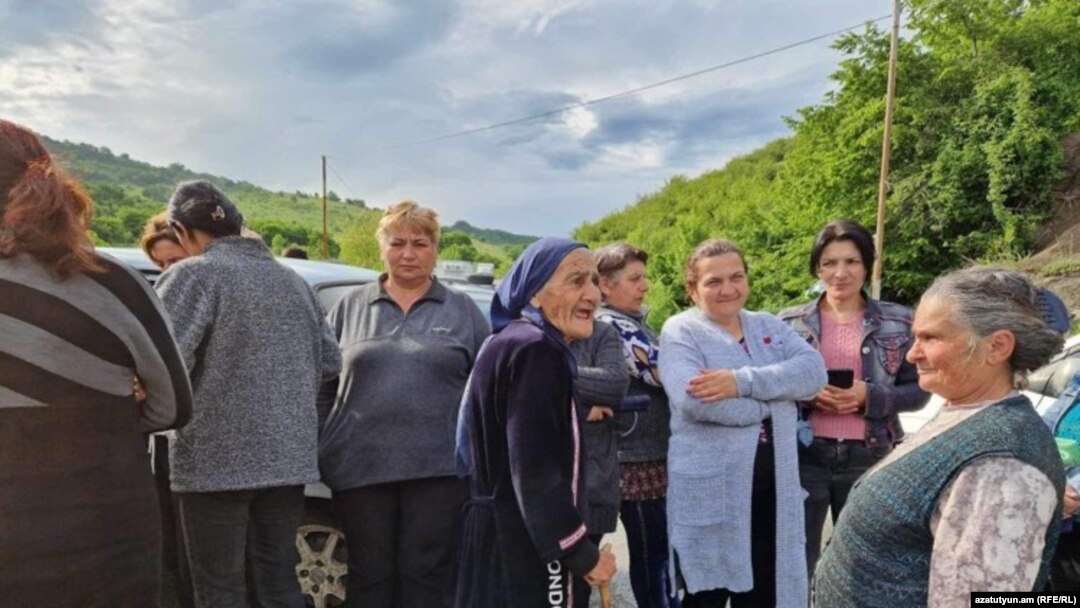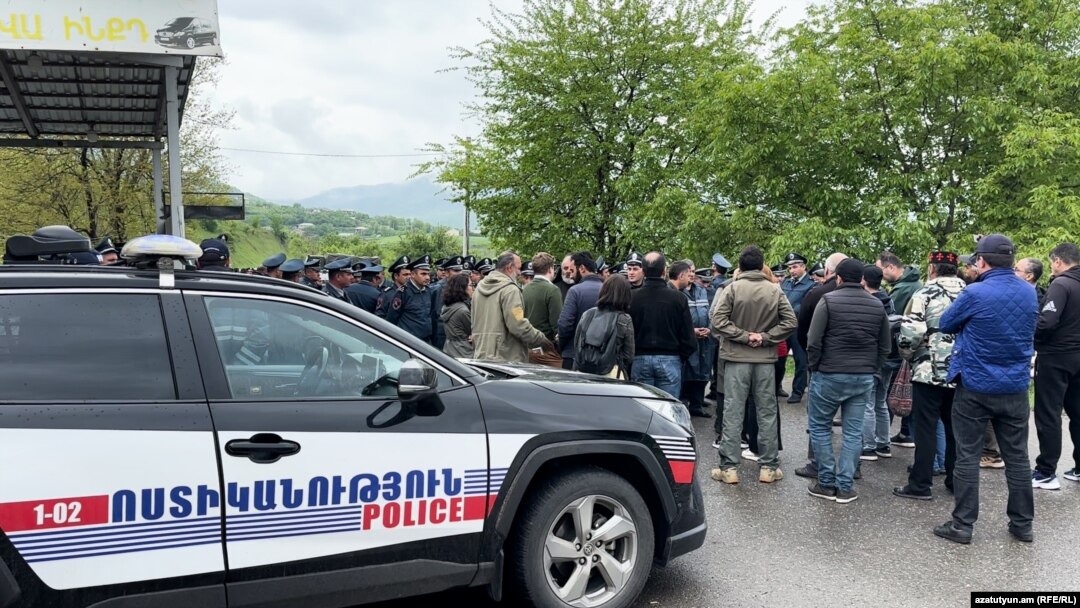The Armenian Foreign Ministry announced late in the evening that deputy prime ministers of the two South Caucasus states met again and signed a protocol on the coordinates of relevant demarcated sections of the Armenian-Azerbaijani border “specified as a result of geodetic measurements.”
The demarcation process began right after Yerevan and Baku announced the land handover on April 19. The announcement sparked protests from many residents of several villages in Armenia’s northern Tavush province adjacent to the disputed areas. They say that the territorial concessions made by Prime Minister Nikol Pashinian would isolate their communities and make them far more vulnerable to Azerbaijani attacks.
The government met with strongest opposition in one of those villages, Kirants. A map released by it on April 19 suggested that Kirants will lose some of its houses and a key bridge connecting it to the rest of the country.

Armenia - Protesting residents of Kirants village block a highway, May 10, 2024.
Riot police cleared a protest camp just outside Kirants early on April 30, arresting dozens of locals who prevented authorities from clearing the adjacent area of landmines and placing new border posts there. The preparations for the land handover were suspended on May 7 as Archbishop Bagrat Galstanian, the head of the Tavush Diocese of the Armenian Apostolic Church leading the protests, took his campaign to Yerevan.
Backed by many opposition groups and public figures, Galstanian has held demonstrations in the capital on a virtually daily basis since May 9. He is demanding not only a halt to the handover but also Pashinian’s resignation. Earlier on Wednesday, Galstanian pledged to keep up the protests.
In written comments to the Armenpress news agency published on Wednesday night, Pashinian’s press office indicated that Azerbaijan will gain control over a part of Kirants and the local bridge as a result of the latest Armenian-Azerbaijani protocol. It said the government will compensate those villages who will lose their properties as a result.
The office also announced that Armenian army units will withdraw from all of the border areas except “the most sensitive Kirants section” in the next “eight to nine days.” Azerbaijani troops will enter the section “later” because “some details there require further clarification,” it added without elaborating.
Armenia - Archbishop Bagrat Galstanian leads a mass protest against Prime Minister Nikol Pashinian in Yerevan, May 9, 2024.
The areas used to be occupied by small Azerbaijani villages captured by Armenian forces in 1991-1992. For its part, Azerbaijan seized at the time large swathes of agricultural land belonging to several Tavush villages. None of that land will be given back to Armenia under the terms of the April 19 border deal, a fact emphasized by angry Tavush residents and Pashinian’s critics in Yerevan.
Armenia’s main opposition groups maintain that the unilateral territorial concession will create serious security risks for not only Tavush but the country as a whole. They say it will also encourage Baku to demand more territory from Armenia.
“Having a delimited border cannot become a threat to the security of the country or any settlement,” claimed Pashinian’s press office.
Speaking in Nagorno-Karabakh on May 10, Azerbaijani President Ilham Aliyev described the land handover as “yet another victory” for Azerbaijan. “We showed the enemy its place, and today the enemy is powerless against us,” he said.


